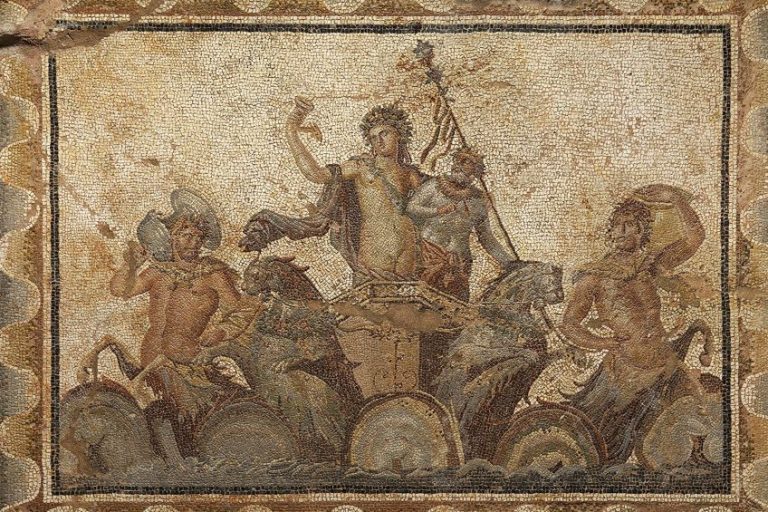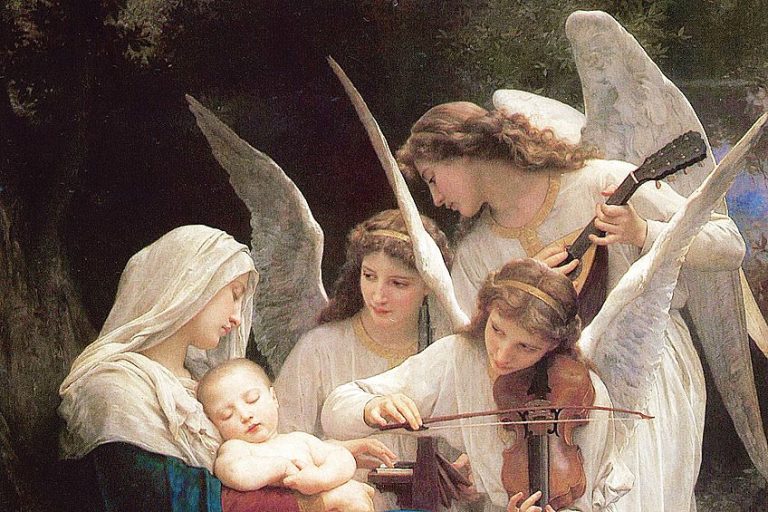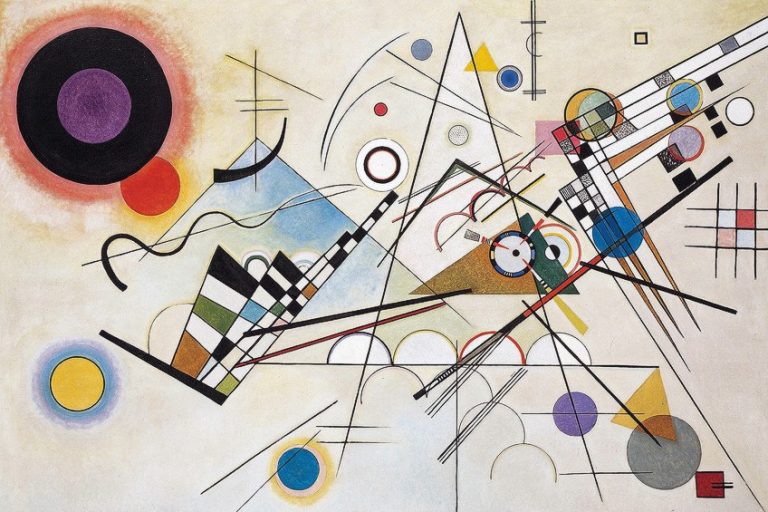Schizophrenia Art – The Relationship Between Art and Mental Illness
Schizophrenia is a complicated and often misrepresented mental illness that affects roughly 0.3% of the global population. The process of creating art can be therapeutic for those who suffer from both the positive and negative symptoms of schizophrenia. Several famous artists have battled schizophrenia in their lifetimes and while the art that they produce can sometimes be harrowing for an outsider, there is a lot of beauty to be found in their ability to create from their pain.
An Introduction to Schizophrenia
Individuals with schizophrenia face not only their own inner demons but also demonization from the world around them. Of all psychological disorders, schizophrenia is probably top of the list. Film and other forms of popular media often paint people with schizophrenia as dangerous, mad, and delusional. Before we discuss schizophrenia as it relates to art, we must provide an accurate description of this mental illness.
Although hallucinations are the most spoken-about symptom of schizophrenia, it is certainly not the only one, nor the most destructive one. There are two classes of schizophrenic symptoms: positive and negative symptoms. Hallucinations, exaggerated perceptions, mania, and delusions are examples of positive symptoms. Positive symptoms are experiences that neurotypical people do not have. These symptoms are added to the typical experience and include, but are not limited to:
- Delusions or false beliefs about the world;
- Visual, auditory, or tactile hallucinations;
- Agitated movements of the body;
- Inappropriate emotions for the context;
- Strange plans and ideas;
- Psychosis or a break with reality.
Negative symptoms are exactly the opposite, an absence of something that neurotypical people take for granted. Negative symptoms can be both mental and physical, and these symptoms are typically the most destructive part of schizophrenia. Negative mental symptoms of schizophrenia include:
- Anhedonia or the inability to experience or express any pleasure;
- Avolition or an absolute lack of motivation;
- Lack of speech;
- Inability to act spontaneously;
- Lack of interest in the world;
- Social withdrawal;
- Alogia or difficulty with speaking as a result of disorganized thinking;
Some negative physical symptoms are:
- Flat affect or lack of emotional display on the face;
- Lack of gesturing with communication;
- Physical inactivity;
- Monosyllabic and monotone speech;
- Lack of eye contact.
Hopefully, you can see that schizophrenia is far more than simply experiencing hallucinations. Often, the most damaging symptoms are the negative symptoms that prevent normal functioning. Schizophrenia can also be worsened by other mental illnesses like anxiety, depression, and often, substance abuse as a means to cope.
Art and art therapy are effective tools for providing some relief from the positive symptoms and helping to facilitate healing from the negative symptoms.
The Benefits of Art Therapy for People with Schizophrenia
The difficulty with communicating that results from some of the negative symptoms of schizophrenia can make talk therapy difficult and ineffective on its own. Anti-psychotic medication is the standard form of treatment, but it is impossible to remove all symptoms. Schizophrenia art therapy is becoming increasingly popular alongside traditional anti-psychotic medical treatments.
How Does Art Therapy Work?
There are countless forms that art therapy can take, but it often happens in a group setting. A therapist will facilitate an environment in which people can express themselves artistically through drawing, painting, or sculpture. The therapeutic nature of this type of intervention is two-fold.
Firstly, the therapist can use the patient’s creation in future talk-therapy sessions to find out more about their internal experiences. Secondly, for schizophrenic patients, in particular, creating with their hands can be an effective soothing mechanism, and many use drawing or painting to transfer their positive symptoms (hallucinations) onto paper, which can make them seem less all-consuming.
People with very severe schizophrenia can often resist traditional treatment methods, and the negative symptoms of lack of motivation and affect (emotion) can cause them to isolate socially. Creating art is a non-confrontational way for schizophrenic patients to explore and express their feelings in a way they would not with a therapist. The group setting can help them overcome their difficulties with social interaction and increase their self-esteem.
People can even benefit from art therapy while amid active psychosis or a loss of touch with reality. The cognitive impairments and disordered thinking patterns that characterize psychotic attacks can make it incredibly difficult for people to verbalize their experiences, but schizophrenic art is a promising therapeutic avenue.

The Case of Kate Fenner
After finally receiving a diagnosis of schizophrenia at 17 years of age, Kate Fenner now uses illustrations to deal with her hallucinations. Kate says that drawing her hallucinations helps her confront the emotions behind them and makes them seem less real and intimidating.
The scary thing about hallucinations is that they do not feel any different from what a neurotypical person would experience when looking at a plant or hearing music. Hallucinations are absolutely indistinguishable from normal perceptions, so Kate uses her drawings to confirm that they are not real.
Kate experiences visual and auditory hallucinations, from hearing voices and random sounds to seeing faces and bugs. Many of her schizophrenia drawings feature cartoon-Esque flies accompanied by text that describe how her depressive symptoms impact her self-esteem. Other paintings and illustrations are direct expressions of what she sees during hallucinations, and they can be quite confronting.
Through her artistic process and sharing her schizophrenia drawings with the world, Kate hopes to break some of the negative stigma associated with schizophrenia diagnoses. There is a desperate need for less demonizing public representation of the more serious mental illnesses, like schizophrenia.
Famous Artists with Schizophrenia
Very often, a painful mental environment comes hand-in-hand with artistic creativity. Is it because artistic expression is one of the easiest avenues of communication, or does creativity naturally accompany disordered mental health?
We cannot make any assumptions, but we can appreciate artists who have fought through devastating and difficult mental situations and have produced some of the most interesting and thought-provoking works of schizophrenia art. We can learn a lot from drawings made by people with mental illness.
Camille Claudel: 1864-1943
Camille Claudel could have been an incredible artist in her own right, but she destroyed many of her original works during a period of intense schizophrenic distress. There is a significant amount of heritability with schizophrenia, and Claudel’s genetic traits sparked her spiral into mental illness after her scorching affair with Auguste Rodin ended badly.
For many years previously, Claudel contributed to the works of Rodin in a significant way, and following her psychotic break, she started to throw accusations of thievery at Rodin. These accusations may not have been too far off.
Claudel spent much of her life confined in an asylum, although many of her friends did not believe it was necessary. Although schizophrenia is certainly not a death sentence, Claudel’s care was not handled properly. Her family never visited her, and they even asked the staff not to send the letters she wrote to them. At the age of 78, Claudel passed away in the asylum. If the world around her had been more compassionate and understanding, we could have seen so much more from this talented artist.

Edvard Munch: 1863-1944
Like Claudel, Munch had both genetic and environmental predispositions to mental illness, schizophrenia in particular. One of Munch’s sisters had schizophrenia, his father suffered from depression, and his mother and other sister had died from tuberculosis when he was young. The painter once said, “I cannot get rid of my illnesses, for there is a lot in my art that exists only because of them.” We can really understand this sentiment when we look at some of his most famous works, including The Scream.
In 1908, following a psychotic break exacerbated by alcoholism, Munch was admitted to a mental health clinic. Later in his life, Munch was also diagnosed with a clinical condition that is closely associated with hypochondria and hysteria called neurasthenia. Not only did Munch have to fight his own internal demons, but he also faced persecution at the hands of the Nazi government. Hilter’s government labeled Munch’s work as “degenerate art” and confiscated many of his works in 1937.
Much of Munch’s schizophrenia paintings feature figures with evident feelings of anguish and despair. Frantic strokes and chaotic colors mirror the artist’s state of mind and give us an insight into what it must be like to live in this world with schizophrenia.
The Scream is definitely Munch’s most famous work, and probably the most famous work in schizophrenic art. We also believe that this painting really captures the way that Munch described his struggles with schizophrenia. In particular, this painting is a testament to his belief that his art would not be the same without his illnesses. There have been countless interpretations of this painting, with some believing the figure represents the angst of the modern human being.
Munch himself describes a walk with two friends in which the sky suddenly turned blood red, he trembled with pain and angst, and he felt that he heard his scream passing endlessly through the world. There is no doubt that this painting is one of the most famous expressions of schizophrenia.
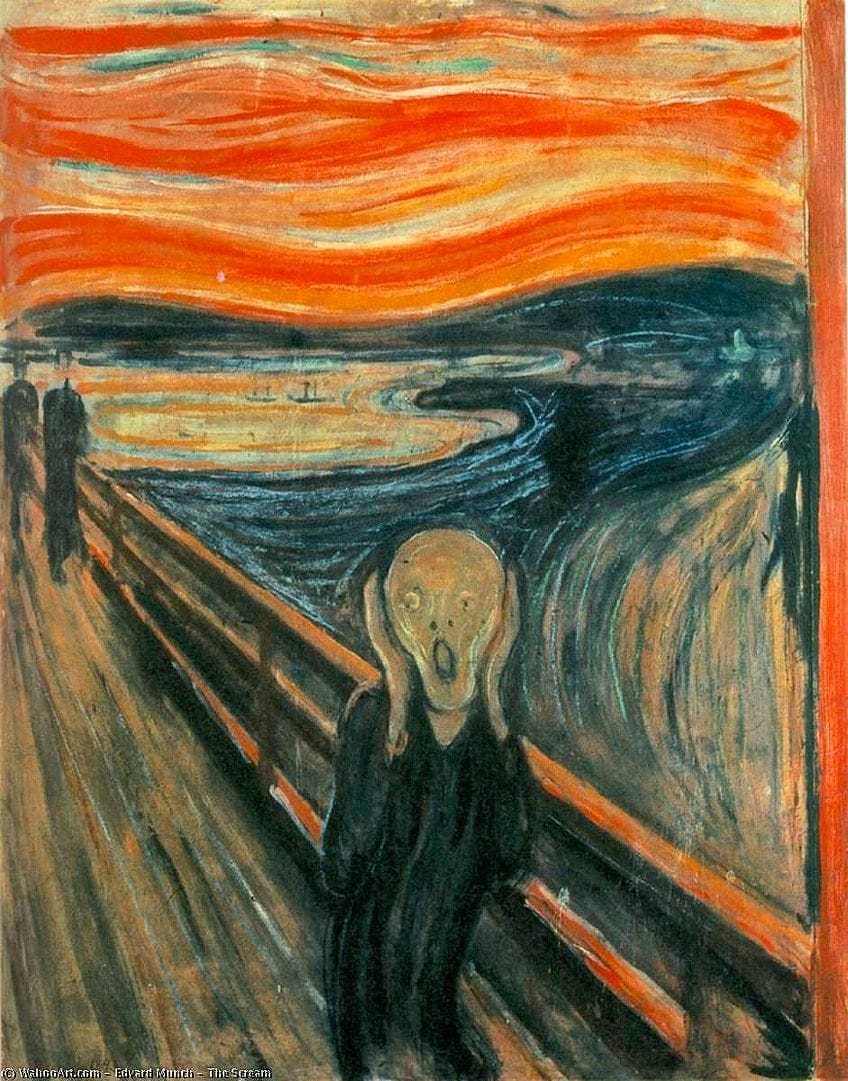
Richard Dadd: 1817-1886
Richard Dadd spent much of his life in psychiatric prisons. The first indicators of Dadd’s schizophrenia emerged during a ten-month expedition in his mid-twenties. At this time, Dadd became increasingly angry and aggressive with those around him, threatened to murder the pope, and began to have delusions. On his return, the delusions began to take over. Dadd’s diet became strange, his behavior changed, and many people struggled to understand him when he spoke.
Dadd was diagnosed with an “aberration of the intellect” and doctors told his father he would benefit from psychiatric care. His father declined the care, and sometime later, Dadd stabbed his father to death on a walk in the park. Following this, Dadd spent forty years in two of England’s most notorious psychiatric prisons. Dadd’s condition gradually declined, the delusions became worse, and he was diagnosed with homicidal monomania as a result of emotional trauma. Today, we know that Dadd suffered from paranoid schizophrenia.
Unfortunately, Dadd lived his life in a time when antipsychotic medication and humane treatments for schizophrenia were not available. Despite his illness, he devoted himself to art. Dadd worked on a particular schizophrenic artwork, Fairy Feller, for nine years, adding so much paint that the canvas is three-dimensional. As ill as Dadd became, and despite the lack of treatment or understanding, he created some beautiful schizophrenia paintings that he deserves to be remembered for.
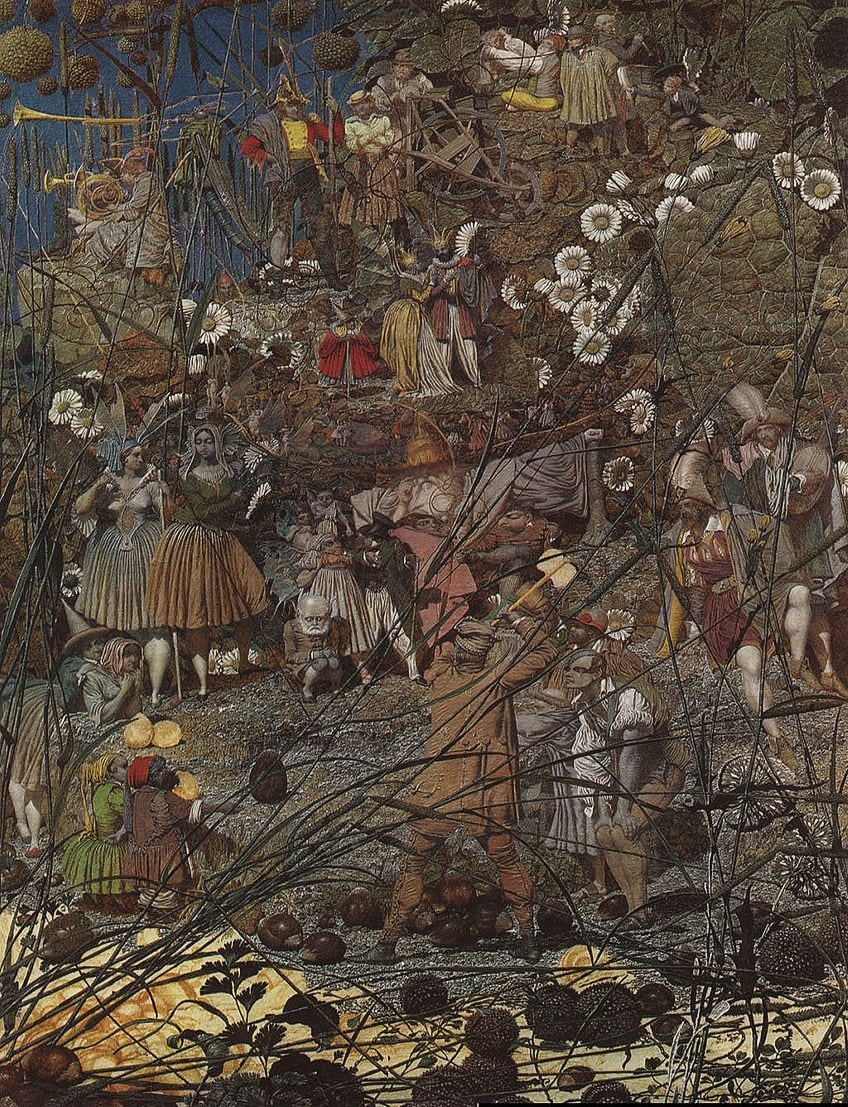
Louis Wain: 1860-1939
As we have seen with the artists above, schizophrenia emerges slowly later in life, typically after a person has reached adulthood. In the case of English illustrator Louis Wain, his mental health only began to decline following the death of his wife. Wain only received a diagnosis of schizophrenia when he was 57 years old. During his illness, Wain became aggressive, and he lived in psychiatric institutions for the last 15 years of his life.
Not only did Wain’s schizophrenia affect his personality and behavior, but his art began to deviate from his known style. Today, Wain is best known for his anthropomorphic cat illustrations. Following his descent into illness, Wain’s cats became more colorful and geometric.
It is possible to see the progression of Wain’s schizophrenic artwork through these cat paintings. His later cats have a frantic air about them with so many colors, patterns, and shapes that it becomes hard to see a cat at all. Wain spent some time in the Napsbury Hospital, where he created these psychedelic-looking cats and eventually died.

August Natterer: 1868-1938
In his early life, Agust Natterer studied engineering, traveled a lot, was a successful electrician, and got married. He began to experience anxiety attacks and delusions, and in 1907 he experienced a pivotal hallucination. During this hallucination, Natterer says over 10,000 images flashed before his eyes in 30 minutes. Following this hallucination, Natterer attempted suicide and was admitted to an asylum. Natterer would spend the rest of his 26 years of life in and out of various asylums.
Natterer is also known as Neter, the name given to him by his psychiatrist to protect him and his family from the social stigma surrounding mental illness during his lifetime. One particularly haunting piece of schizophrenic artwork by Natterer is entitled My Eyes in the Time of Apparition, and it is two bloodshot and wide-open eyes staring at you from the page. The irises of the eyes do not match, which is unnerving.
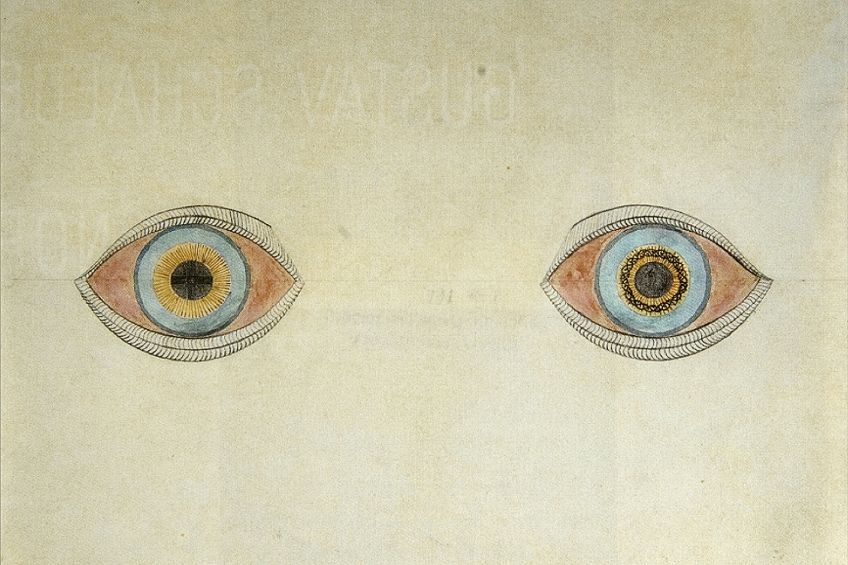
Agnes Martin: 1912-2004
For almost all of her 92 years of life, Agnes Martin did not disclose her schizophrenia diagnosis to many people. She is described as an inward and silent person, and her art is very minimalist. Martin is said to have believed that her illness had little to do with the art she created. Others believe that perhaps her strictly ordered minimalist style may represent her attempts to create order from disorganized thoughts. We cannot know for certain, but we know she created beautiful art during her long lifetime.
Yayoi Kusama: 1929 –
Yayoi Kusama is one of the most famous international female artists, and she has been living in a psychiatric hospital for over 40 years. Her exact diagnosis is unclear. In the 1950s, Kusama was diagnosed with schizophrenic tendencies on the basis of her overwhelming hallucinations. Despite this diagnosis, Kusama says that her biggest mental struggle is with debilitating anxiety.
Before entering the psychiatric institution of her own volition, Kusama describes painting nets all over the place. These nets, as Kusama describes, came to life and began to trap her, causing a panic attack. Despite her struggles with mental illness, Kusama is known throughout the world as the most famous modern artist to come out of Japan. Kusama’s art often deals with psychological and autobiographical topics, and you can identify her work by her characteristic bright colors and extensive use of dots.
Some schizophrenic artists choose to paint their hallucinations as a way to confront them. Other artists create paintings that reflect their experiences of mental health struggles. For too long, the mainstream understanding of schizophrenia and other serious mental illnesses has been reductionist, damaging, and stigmatic.
We are fortunate that many artists with schizophrenia put so much of their experiences into their art. We must pay attention to drawings made by people with mental illness so that we may develop a deeper understanding, and hopefully, deeper compassion for all who live with mental illness.
Isabella studied at the University of Cape Town in South Africa and graduated with a Bachelor of Arts majoring in English Literature & Language and Psychology. Throughout her undergraduate years, she took Art History as an additional subject and absolutely loved it. Building on from her art history knowledge that began in high school, art has always been a particular area of fascination for her. From learning about artworks previously unknown to her, or sharpening her existing understanding of specific works, the ability to continue learning within this interesting sphere excites her greatly.
Her focal points of interest in art history encompass profiling specific artists and art movements, as it is these areas where she is able to really dig deep into the rich narrative of the art world. Additionally, she particularly enjoys exploring the different artistic styles of the 20th century, as well as the important impact that female artists have had on the development of art history.
Learn more about Isabella Meyer and the Art in Context Team.
Cite this Article
Isabella, Meyer, “Schizophrenia Art – The Relationship Between Art and Mental Illness.” Art in Context. February 22, 2021. URL: https://artincontext.org/schizophrenia-art/
Meyer, I. (2021, 22 February). Schizophrenia Art – The Relationship Between Art and Mental Illness. Art in Context. https://artincontext.org/schizophrenia-art/
Meyer, Isabella. “Schizophrenia Art – The Relationship Between Art and Mental Illness.” Art in Context, February 22, 2021. https://artincontext.org/schizophrenia-art/.



